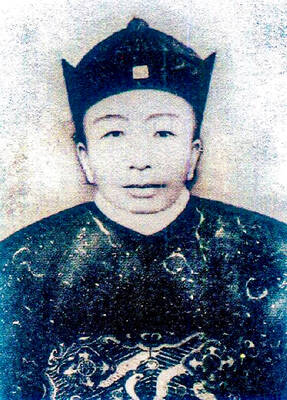The Human Stain, directed by Robert Benton from a screenplay by Nicholas Meyer, is an honorable B+ term paper of a movie: sober, scrupulous and earnestly respectful of its literary source. This is precisely the problem: that source, Philip Roth's 2000 novel, is not especially sober, scrupulous or respectful. It is an angry, ungainly squall of a book, a clamorous defense of sexual vitality in an age of Puritan censoriousness and a lyrical inquiry into the mysteries of race, old age and recent American history.
Like much of Roth's recent work, The Human Stain bursts with characters and ideas, and its apparently haphazard organization disguises an elegant and cunning narrative strategy.
The filmmakers explicate Roth's themes with admirable clarity and care and observe his characters with delicate fondness, but they cannot hope to approximate the brilliance and rapacity of his voice, which holds all the novel's disparate elements together. Without the active intervention of Roth's intelligence -- filtered through the voice of his frequent alter ego, a novelist named Nathan Zuckerman -- the story fails to cohere. Its people wander through a strangely artificial landscape, and the ideas hover in the air above them like clouds painted on a backdrop.

PHOTO COURTESY OF FOX FILMS
Zuckerman (Gary Sinise, his gentle face frozen in a diffident grin) has retreated to a lakeside cabin in New England, hoping to find peace and quiet after two divorces and a bout of prostate cancer.
His solitude is interrupted one night by the arrival of Coleman Silk (Anthony Hopkins), a former dean and classics professor at nearby Athena College, who was forced to resign after being accused of making racist remarks during a lecture. Coleman, whose wife died suddenly in the wake of the scandal, wants to take revenge on his former colleagues by writing a book. He puts this project aside once he falls into a revivifying affair with Faunia Farley (Nicole Kidman), a damaged, desolate (and, at least in the book, illiterate) 34-year-old who does menial jobs at the college, the post office and a local dairy farm. Their sexual idyll is menaced by the faculty busybodies who chased Coleman from his job, and also by Faunia's former husband, Lester (Ed Harris), a deranged Vietnam veteran who used to beat her and now stalks her in his big red pickup truck.
All this takes place at a moment in the recent past that history has conspired to make more distant than it might otherwise be. Bill Clinton's confessional TV appearance in the summer of 1998 plays on TV, and later the unmistakable voice of Kenneth Starr issues from a car radio. Remember them? It seems so long ago.
But while the book reacted to Clinton's impeachment with appalled amazement, the movie cannot help casting a veil of wry nostalgia over a moment when the fate of American democracy seemed to hinge on an episode of oral sex, rather than on war, terror and hanging chads. And similarly its reconstruction of an earlier era -- the postwar years of Coleman Silk's youth -- is swathed in the usual caramel-colored light of fond flashbacks, in which fastidious period details meant to produce realism wind up subverting it.
What keeps the movie from drifting in the Sargasso Sea of literary high-mindedness is the vitality of the acting. Benton, whose other movies include Kramer vs. Kramer, Places in the Heart and Nobody's Fool, is the kind of director whose affection and respect for actors seep through the screen; his solicitude seems to open them up.
That Hopkins and Kidman are miscast is almost axiomatic. Kidman tries to overcome this by sheer force of will, struggling to stifle her natural radiance, blunt her crystalline voice and blur her fine features, and she comes closer to succeeding than you might expect. Hopkins, for his part, must battle a more glaring discrepancy, and he does so with swinging nonchalance. Coleman Silk is a black man who has passed for white for most of his adult life, styling himself as the first Jewish classicist ever hired at Athena.
The versatile Hopkins has played improbable roles like Richard M. Nixon and Pablo Picasso. But Coleman Silk seems like a stretch even for him. The absurdity is compounded by the casting of Wentworth Miller, a fine young British-born actor making his film debut, as the younger Coleman. Miller looks nothing like either Hopkins or most of the members of Coleman's family, played by Anna Deavere Smith, Harry Lennix, Lizan Mitchell and Danny Blanco Hall. When he sits down to dinner with them, you may find yourself struggling to suppress the memory of Steve Martin at the beginning of The Jerk.
These peculiarities of casting matter less than they might; or rather how much they matter changes from scene to scene. The film includes some sex, a boxing match and an occasional burst of dancing, but most of the action consists of two characters in a room talking. Some of these moments -- a late confrontation between Lester and Zuckerman, a breakfast table quarrel between Faunia and Coleman, a meeting of the minds between Faunia and a large, caged crow -- are awkwardly paced and placed, but many others are alive with human pain and heat.
Some of the best performances are in secondary roles. Jacinda Barrett is wonderfully touching as Coleman's first great love, a blond Midwesterner to whom he decides, heedlessly and a little cruelly, to divulge the secret of his race. Smith, her face a mask of maternal stoicism, brings home the tragedy of Coleman's decision to pass for white with a speech so drily and evenly enunciated that its lacerating insight only registers once the camera has turned away.
At its best -- which also tends to be at its quietest -- The Human Stain allows you both to care about its characters and to think about the larger issues that their lives represent. Its deepest flaw is an inability to link those moments of empathy and insight into a continuous drama, to suggest that the characters' lives keep going when they are not on screen. The film's powerful individual scenes seem like excerpts from a missing whole, well-appointed rooms in a house whose beams and girders have been cut away.

The canonical shot of an East Asian city is a night skyline studded with towering apartment and office buildings, bright with neon and plastic signage, a landscape of energy and modernity. Another classic image is the same city seen from above, in which identical apartment towers march across the city, spilling out over nearby geography, like stylized soldiers colonizing new territory in a board game. Densely populated dynamic conurbations of money, technological innovation and convenience, it is hard to see the cities of East Asia as what they truly are: necropolises. Why is this? The East Asian development model, with

June 16 to June 22 The following flyer appeared on the streets of Hsinchu on June 12, 1895: “Taipei has already fallen to the Japanese barbarians, who have brought great misery to our land and people. We heard that the Japanese occupiers will tax our gardens, our houses, our bodies, and even our chickens, dogs, cows and pigs. They wear their hair wild, carve their teeth, tattoo their foreheads, wear strange clothes and speak a strange language. How can we be ruled by such people?” Posted by civilian militia leader Wu Tang-hsing (吳湯興), it was a call to arms to retake

This is a deeply unsettling period in Taiwan. Uncertainties are everywhere while everyone waits for a small army of other shoes to drop on nearly every front. During challenging times, interesting political changes can happen, yet all three major political parties are beset with scandals, strife and self-inflicted wounds. As the ruling party, the Democratic Progressive Party (DPP) is held accountable for not only the challenges to the party, but also the nation. Taiwan is geopolitically and economically under threat. Domestically, the administration is under siege by the opposition-controlled legislature and growing discontent with what opponents characterize as arrogant, autocratic

When Lisa, 20, laces into her ultra-high heels for her shift at a strip club in Ukraine’s Kharkiv, she knows that aside from dancing, she will have to comfort traumatized soldiers. Since Russia’s 2022 invasion, exhausted troops are the main clientele of the Flash Dancers club in the center of the northeastern city, just 20 kilometers from Russian forces. For some customers, it provides an “escape” from the war, said Valerya Zavatska — a 25-year-old law graduate who runs the club with her mother, an ex-dancer. But many are not there just for the show. They “want to talk about what hurts,” she